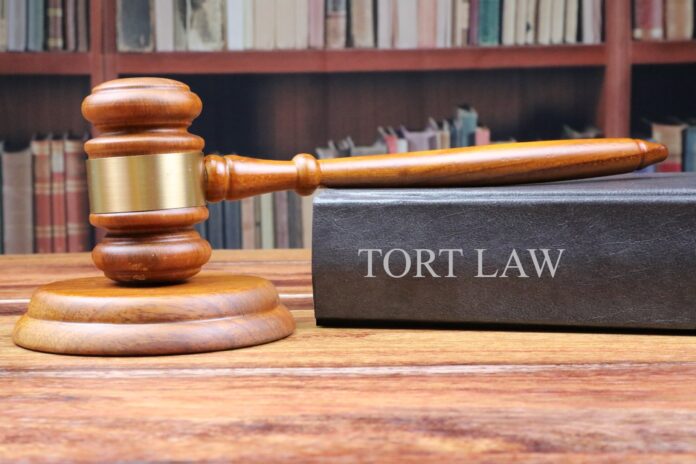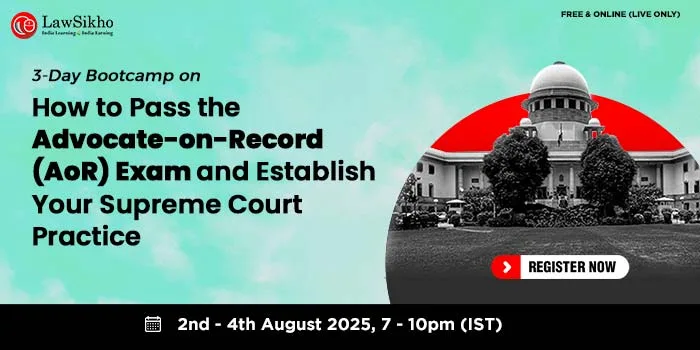This article is written by Satyaki Deb, an LL.M. candidate from the Rajiv Gandhi School of Intellectual Property Law, IIT Kharagpur. In this article, we will discuss all the facets of the tort of conversion, including the role of intent, its features, the standard of liability, defenses, remedies under conversion, and more, from an analytical perspective.
It has been published by Rachit Garg.
Introduction
Tort of conversion is an intentional tort, which means that it is an act of wrongdoing that was done deliberately. It occurs when a person wrongfully takes, keeps, uses, or disposes of another person’s property without their consent and against their will. Conversion has been a common law tort since the 16th century and has been recognized in most common law jurisdictions.
Conversion is different from other forms of tort law because it doesn’t involve physical harm to a person but rather the wrongful taking or use of another person’s property. It is a civil wrong and the victim of the conversion can sue the wrongdoer for damages.
The key factor is that the property must be capable of being owned and must have been taken or used without the owner’s consent. Thus, the tort of conversion can be defined as the act of deliberately dealing with a chattel in a manner inconsistent with another’s rights, whereby that other is deprived of the use and possession of it. In this article, we will discuss all the facets of the tort of conversion, including the role of intent, its features, the standard of liability, defenses, remedies under conversion, and more, from an analytical perspective.
Role of Intent under Tort of Conversion
The key factor in the tort of conversion is intent. In order for a conversion to occur, the converter must have acted intentionally to take or use the property without the owner’s consent. This means that the converter must have acted with the intention of taking or using the property for his own benefit.
The converter may not have known that the property belonged to someone else or that their actions constituted a conversion. However, if they acted with the intent of taking or using the property without the owner’s consent, then they are liable for conversion.
In some cases, a mistake can lead to a conversion. For example, if someone takes a piece of jewelry that they think is theirs but actually belongs to someone else, then they may be liable for conversion if they did not take reasonable precautions to ensure that it was theirs.
Key features of the Tort of Conversion
The tort of conversion has many facets and features, the details of which are discussed exhaustively in the appropriate places in this article. For the sake of convenience, the key features of the tort of conversion are briefly stated as follows:-
- The dealing of the chattel by the defendant must be intentional in nature to constitute a tort of conversion, but the interference with the claimant’s right to possession may or may not be deliberate in nature. What this signifies is that even a bonafide defendant may be held liable for the tort of conversion because there is strict liability.
- The acts of conversion by the defendant must be inconsistent with the right to possession of the plaintiff.
- Like any other tort, for the tort of conversion, the nature of protected interests should be in sync with the remedies available to the plaintiff. If the court deems fit, the court can order the return of the converted chattel back to the plaintiff or claimant. But it is pertinent to remember that this remedy of return of converted chattel back to the claimant is not available as a matter of right even where the defendant retains possession of the goods. So, in this regard, there are some inconsistent areas under the tort of conversion as this tort performs a number of roles, but none of them is fully adequate in nature. Moreover, another cogent argument against the tort of conversion is that law of property should govern the return of goods back to the persons with appropriate interests and not by virtue of the law of obligations.
- Tort of conversion is said to try to do three very different things at the same time, viz:-
- It allows the claimant to get back their property or their equivalent value from the wrongful possessor (like a recovery function or surrogate vindication).
- It acts to compensate owners or rightful claimants for losses caused by past misdealings with their property (tort proper).
- It tries to reverse unjust enrichment arising from the property or its proceeds which have fallen into the wrong hands (restitution).
According to Andrew Tettenborn, the above three functions of conversion should be kept distinct from each other to save innocent converters from being caught by the strictness of its liability. The last function of restitution requires a little more analysis. It is often the case that the defendant has an opportunity to use the chattel productively and may be unjustly enriched in this manner. Since a tort is basically a wrong, ‘unjust enrichment’ need not involve a wrong at all but seeks to correct transfers that should not have occurred. This makes the relationship between conversion and unjust enrichment very awkward, and this issue arises particularly in respect of available remedies for the tort of conversion because not everyone agrees that there can be remedies for unjust enrichment. According to Peter Birks, the correction of an unjust transfer should not be described as a remedy but as the “vindication of a right.”
Standard of Liability under Tort of Conversion
There is strict liability under the tort of conversion. What this means is that there need not be any knowledge of inconsistency with the claimant’s rights, or rather, there need not be any knowledge of the claimant’s rights at all. Thus, conversion may be committed by completely faultless conduct as well. Prima facie, this appears to imply that intention has no role in determining liability under the tort of conversion. But to be precise, “intention to assert dominion over the goods” is required for liability under the tort of conversion. The concept of “deliberate dealing” below will explain this nuance further.
Deliberate Dealing
In the case of Kuwait Airways v. Iraqi Airways Co. (Nos 4 and 5) [2002], Lord Nicholls laid down three elements in the general definition of conversion, viz:-
- The defendant’s conduct was inconsistent with the rights of the owner or the claimant.
- The conduct of the defendant was ‘deliberate’ and not accidental.
- The conduct was extensive in a manner that the rights of the owner or the claimant were encroached and as a result, he was excluded from the use and possession of the goods.
In the opinion of Peter Cane, the second feature of conversion, where the conduct of the defendant needs to be deliberate and not accidental, creates a potential problem because it is not the word “deliberate” but the apparent contrast with “accidental” that creates the problem. The potential problem is best understood with an illustration. Let us consider A and B as having two identical bags (contents vary), and at the billing counter, A picks up and goes away with B’s bag, thinking B’s bag to be his own, thereby deliberately asserting dominion over B’s bag. Here, A’s conduct is both accidental and deliberate at the same time. This confusion created by Lord Nicholls can be explained and potentially solved by stating that an accidental taking of the claimant’s chattel may still be conversion, provided the defendant intends to exercise dominion over it.
The contrary case is also a real possibility, where the defendant deliberately takes possession of the claimant’s chattel but does not intend to exercise dominion over it. This is not conversion but may amount to trespass. Lord Nicholls also stresses this nuance in the Kuwait Airways case by describing the lack of intent as relevant as whether the owner is excluded from possession at all.
Another case is interesting to mention in this regard, which Lord Nicholls mentioned in the Kuwait Airways case. In this referred case, Fouldes v. Willoughby (1841), the plaintiff had paid the defendant to ferry his two horses across the River Mersey on the Birkenhead ferry. The defendant not only refused to transport them but also turned them loose. It was held not to be a conversion as the defendant did not want to assert dominion over the horses. This case beautifully illustrates the significance of intention to the tort of conversion and the difference between the tort of conversion and the tort of trespass to goods. To sum it up, in order to constitute a tort of conversion, the defendant needs to intend to make some use of them, either by himself or any of his agents, in a manner such that, owing to his actions, the goods are either consumed or destroyed, to the prejudice of the actual owner. So in this Fouldes case, if the defendant had supposedly thrown them into the river and drowned the horses, then it would constitute a tort of conversion as the chattel has been destroyed or changed in quality altogether.
Which goods can be ‘converted’ under Tort of Conversion
It is a very pertinent aspect to ponder as to what forms of property can be brought under the tort of conversion. It is an established general principle that only chattels (not land) may be converted. In other words, only tangible property can be converted. This principle was settled in the landmark case of OBG v. Allan (2007) by the House of Lords. So, in this case, the invalidly appointed receivers of the company were not liable under the tort of conversion for interfering with the contractual interests of the company (by bringing those contracts to an end and seeking settlements against contracting parties). On the contrary, a share certificate or a cheque is tangible property, and so these chattels may be converted. An example of a case of the conversion of a cheque is International Factors Ltd. v. Rodriguez (1979).
What interest in the chattels must the claimant have
Any plaintiff or claimant who wishes to sue under the tort of conversion must have the right to possession of such chattel at the time of the conversion. If the claimant fails to show this crucial prerequisite, then his action or claim shall fail. This is because the claimant needs to have a better interest than the defendant. Here “better interest” does not necessarily mean the best or ultimate right to possession. The claimant merely needs to demonstrate a better right to possession than the defendant at the time of the alleged conversion. What this implies is that even bailees or finders of goods may be able to sue for conversion if the bailed or found chattel is taken from them by someone with no better right to possess it than they do.
What is Right in Possession?
There is a difference between the legal concept of possession and the ordinary meaning of possession. Legally, the right to possess a chattel may vary depending on the purpose of possession and may be relative to the rights of others.
When a person is protected by the right to possession, the law does not require such a person to prove his ownership. It is the burden of the defendant to justify the taking, detention, or possession of such chattel. This presumption in favor of possession also imposes respect for possession, irrespective of the method by which possession was obtained. To frame it precisely there are rights to possess and rights that flow from acquired possession. Both British and American law use the word “title” to indicate the “right to possess.” Interestingly, it is possible to have two or more titles to a chattel, one of which is a stronger title than the other. Suppose A makes a wooden bat but unfortunately loses it. B finds the bat. A can claim it from the finder, B. But if A does not claim the bat from B, it is B who will have a title against everyone in the world. In other words, A has a better right to possess the bat than B, but B also has a better right to possess the bat than anyone else except A.
The Relative Nature of Possessory Rights
The above discussion on the right to possession clearly shows the relative nature of the same, and such a nuance warrants a more elaborate case law-oriented analysis. In the case of Parker v. British Airways Board (1982), a passenger came across a gold bracelet in an executive lounge occupied by the defendant. He handed it over to an employee of the defendant and requested that, in case the actual owner is not found, it be returned to him. It was not claimed, and the defendant sold it for £850. The passenger (plaintiff) sued the defendant under the tort of conversion and successfully recovered £850 as damages. This was because the plaintiff, as the finder, had relatively better rights to it than the whole world except the actual owner or one who could assert a prior right to keep the chattel, which was in force at the time the finder took the chattel under his care and control.
It may be rightly wondered, if the right to possession is relative, as explained above, then what happens when a thief has stolen a chattel, the chattel is recovered by the police, but the actual owner cannot be found? In such cases, will the thief have the better title to possess it? In the event the police have no statutory power to retain the stolen goods, it is indeed the thieves that can successfully claim or recover the stolen property from the police as seen in cases like Costello v. Chief Constable of Derbyshire Constabulary (2001), Gough v. Chief Constable of West Midlands Police (2004). To reiterate the fundamental aspect of this nuance, if the lawful owner is found, then the stolen goods must be returned to them.
What amounts to conversion
Suppose A commits a tort of conversion against B where without legal justification he does any of the following in relation to a chattel belonging to B:-
- A possesses the chattel but fails to return the same to B upon his demand.
- A takes it from B or from a third party.
- A receives it from a third party C who has no title to it.
- A physically transfers the chattel to a third party C by gift or sale or otherwise in a manner that destroys B’s title to it.
- A destroys it.
- Being a bailee, A wrongfully loses it or allows it to be destroyed.
- Having obtained it wrongfully, A wrongfully keeps or continues to use it.
If A does more than one of the above-mentioned acts, then A has done two or more acts of conversion, and in such cases, subject to the laws of limitation, B can choose to rely on any individual conversion to claim damages.
Remedy for Tort of Conversion
If a person is found liable for conversion, the owner of the property may be entitled to damages. The amount of damages depends on the value of the property taken or used, as well as any other expenses that were incurred as a result of the conversion.
The court may also order the converter to return the property to the owner. If the property cannot be returned, the court may order the converter to pay the owner the full value of the property.
In some cases, the court may also grant the owner of the property an injunction, which is an order that prevents the converter from using or disposing of the property in any way. This is typically used to protect the owner’s rights to the property and prevent any further harm. Thus, the remedies are:
- Compensatory Damages: The victim of a conversion can bring a lawsuit to recover any money lost due to the defendant’s wrongful act, such as the cost of replacing the item or any additional costs associated with the loss.
- Punitive Damages: Punitive damages are awarded in cases of malicious or egregious conduct and are meant to punish and deter future similar acts.
- Restitution: The court may order the defendant to return or restore the property or its value to its rightful owner, if possible.
- Injunction: An injunction is an order from a court that requires a person or entity to cease certain activities, such as continuing with a conversion of property.
- Nominal Damages: A victim may be awarded nominal damages if they have suffered no actual losses but have still had their legal rights violated by another’s actions.
- Return of goods: Where the defendant is still in possession of the converted goods then the claimant may seek their return.
Defenses for Tort of Conversion
The following can act as defenses for the defendant in a suit for conversion:-
1. Lack of Intent: The defendant did not intend to convert the plaintiff’s property. But since strict liability is there for conversion, this defense fails in most cases.
2. Good Faith: The defendant believed in good faith that he or she had a right to take possession of the property in question.
3. Statute of Limitations: The plaintiff has waited too long to bring a claim for conversion, and the statute of limitations has expired.
4. Necessity: The defendant took the property in order to prevent a greater harm from occurring, such as theft or destruction of the property by an outside party.
5. Laches: The plaintiff unreasonably delayed bringing suit, and this delay prejudiced the defendant’s ability to defend himself or herself against the conversion claim.
6. Another defense is that the converter had a legal right to take or use the property. This could include a court order or a contract that gave them permission to take or use the property.
7. The converter or defendant may be able to prove that the owner of the property consented to their taking or using the property. This could include a verbal agreement or a written contract.
Conclusion
The tort of conversion of goods is the deliberate and wrongful interference with goods in a manner inconsistent with another’s right (who has a better title to the goods) whereby that other is deprived of the use and possession of it. The common law action to recover the damage for conversion of goods is called trover. The tort of conversion has more practical importance than trespass to goods because conversion, by contrast, involves all actions that are inconsistent with the claimant’s title to the goods, whereas trespass to goods, like all forms of trespass, is restricted to direct interferences.
References
- https://www.law.cornell.edu/wex/conversion#:~:text=Conversion%20is%20an%20intentional%20tort,exert%20property%20rights%20over%20it.
- https://www.stimmel-law.com/en/articles/conversion-basic-tort
- https://conversion.uslegal.com/civil-liability-for-conversion/
Students of Lawsikho courses regularly produce writing assignments and work on practical exercises as a part of their coursework and develop themselves in real-life practical skills.
LawSikho has created a telegram group for exchanging legal knowledge, referrals, and various opportunities. You can click on this link and join:
Follow us on Instagram and subscribe to our YouTube channel for more amazing legal content.






